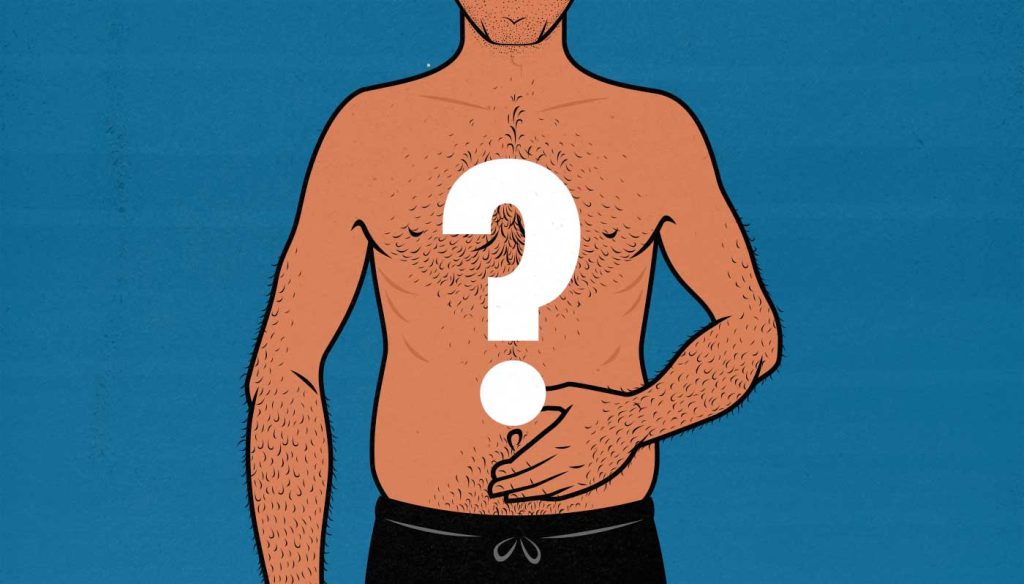
Are You Lean Enough to Bulk?
Let’s say you’re a skinny guy eager to build muscle. But you aren’t lean. You don’t have much muscle definition. No abs. Maybe you’re even “skinny-fat.” Are you lean enough to bulk? After all, even if you do a lean bulk, you may still gain some fat. That can be stressful if you’re already feeling too soft.
Plus, many bodybuilders believe that when your body-fat percentage gets too high, it interferes with bulking. Testosterone converts into estrogen, insulin sensitivity crashes, it gets harder to build muscle, and you gain proportionally more fat. Is any of that true?
How can you know if you’re lean enough to bulk?
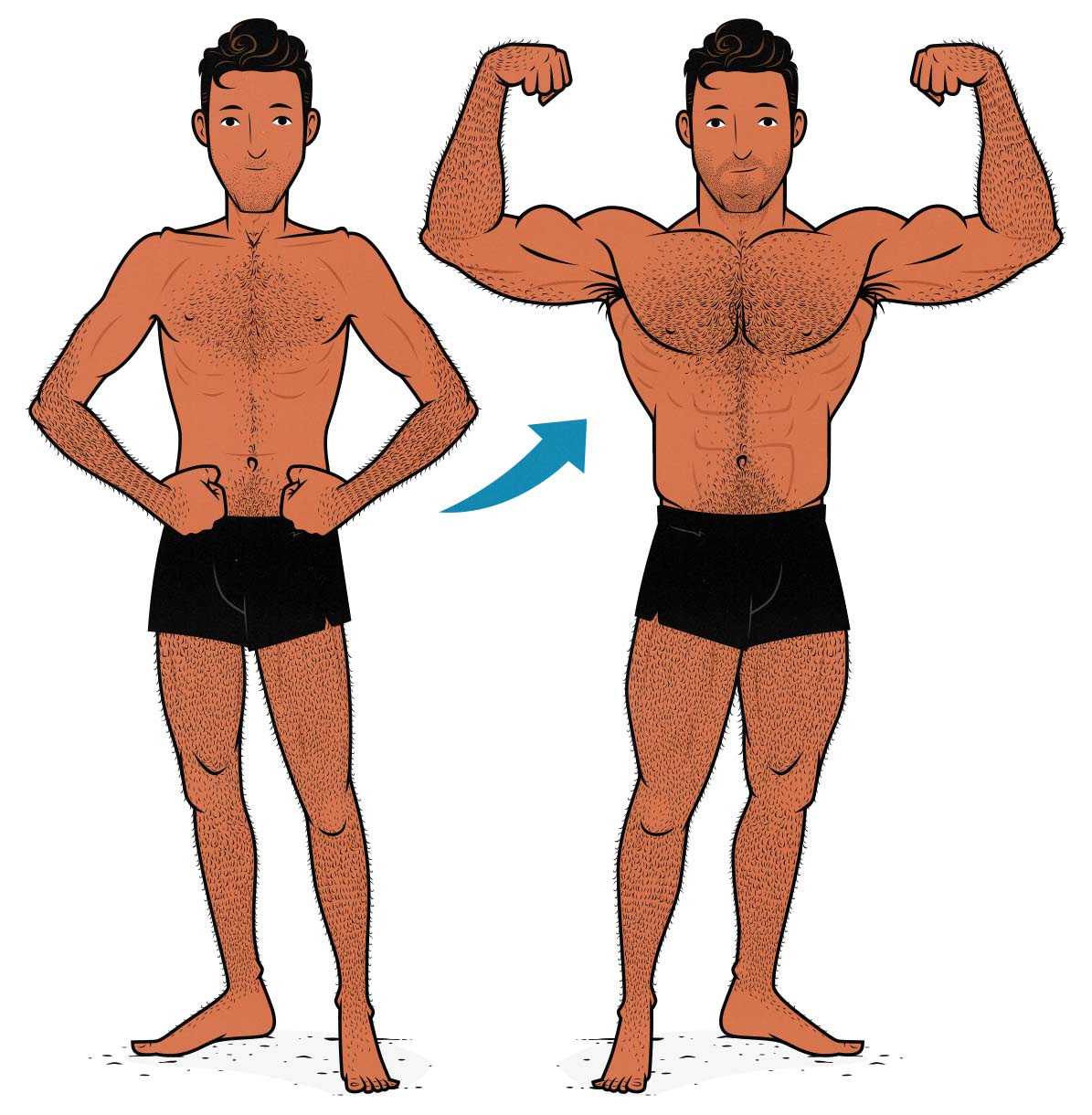
What Does 20% Body Fat Look Like?
Before we dive into the article, let’s get onto the same page about what 20% body fat looks like. That body-fat percentage is often considered the point where health and hormones decline. That’s when most bodybuilders will tell you to stop bulking.
20% body fat looks different on different people. Some of us store more fat underneath our abs (visceral fat), giving us harder abs but worse health outcomes. Other people store more fat on top of their abs, making them look softer but without much risk to their health. And some guys store more fat in their legs, chests, or lower backs. Plus, the more muscle you have, the buffer you’ll look, and the better your muscle definition will show through. Still, for most newish lifters, 20% body fat often looks something like this:
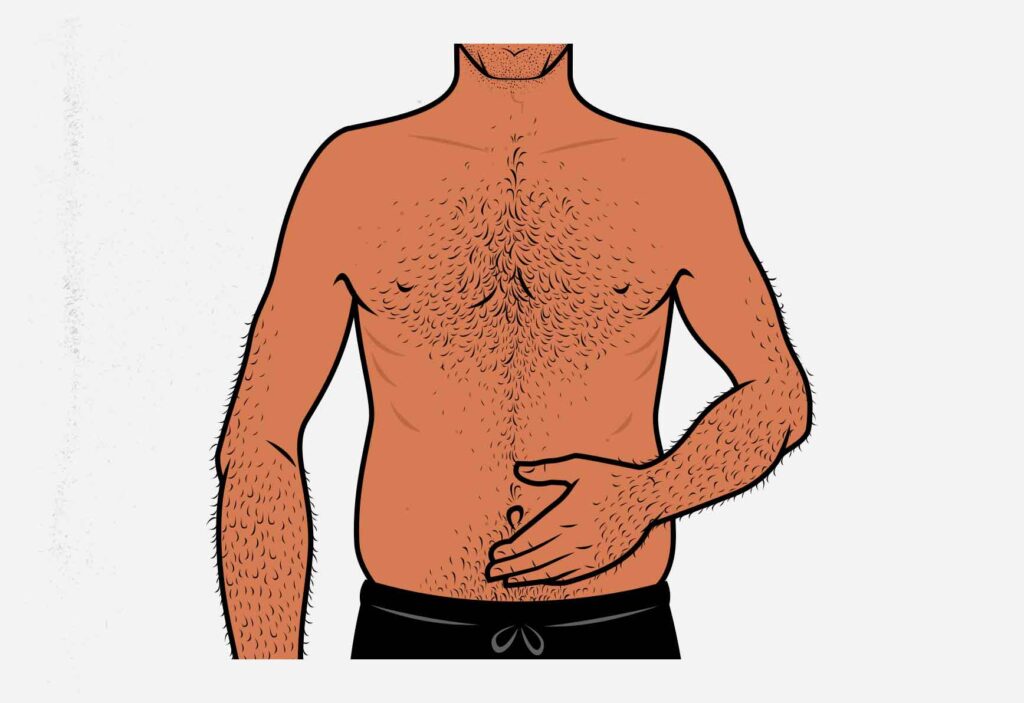
If you’re trying to estimate your own body-fat percentage, here’s what to look for:
- Love handles: if you have love handles, you’re probably over 20% body fat.
- Flat stomach: if you have a flat stomach when standing, you’re probably under 20% body fat.
- Upper Abs: if you can see your upper abs under any lighting, you’re probably under 15% body fat.
- Lower Abs: if you can see your lower abs under any lighting, you’re probably under 12% body fat.
You don’t need to be perfectly precise. There are no sharp cut-offs. 20% body fat isn’t physiologically different from 15% or 25%. If your estimation is off by a few percentage points, that’s okay.
Does Being Lean Make it Easier to Build Muscle?
Talk to a few bodybuilders, and you’ll probably hear that being lean increases your testosterone and insulin sensitivity, making it easier to build muscle leanly. On the other hand, if you let yourself get too fat, your insulin sensitivity falls, you start converting testosterone into estrogen, your inflammation goes up, and it becomes harder to build muscle, easier to gain fat.
That isn’t quite right. In fact, the opposite seems to be true:
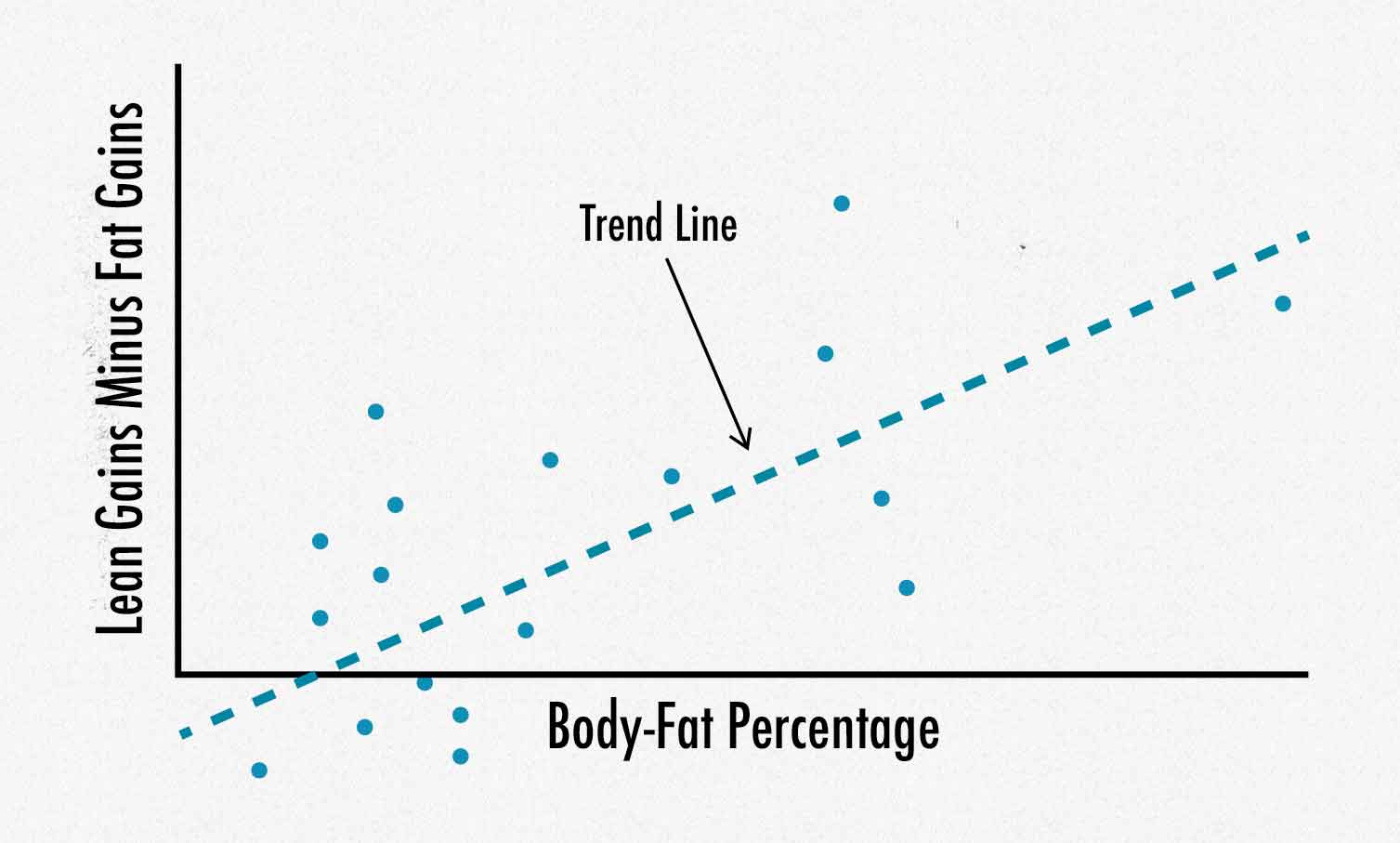
This data comes from a study by Schoenfeld et al., made into a graph by Greg Nuckols and Eric Trexler, PhD. It shows that people gain less fat when bulking at higher body-fat percentages. This may seem counterintuitive but think about all the overweight people who start lifting weights and improving their diets. They’re almost always able to build muscle while losing weight. They’re building muscle while burning fat. That’s even better than making lean gains. That’s body recomposition.
Now imagine a guy at 10% body fat trying to bulk up. His body won’t replace what little fat it has with muscle, and even if it did, that wouldn’t be a good thing. 10% body fat is already on the low end of the healthy body-fat percentage range. Plus, losing a few pounds of fat would only free up enough room for a few pounds of muscle. So it’s not that lean guys are better at bulking, just that they have to bulk. Otherwise, they stand no chance of building muscle.
So he bulks. And maybe he gains 7.5 pounds of muscle and 2.5 pounds of fat over the course of a few months. That brings his body-fat percentage up to 11%. He’s still lean, still has abs, and he’s quite a bit more muscular. That bulk is considered lean, but it isn’t nearly as lean as the overweight person building muscle while losing fat.
If we look at extreme cases, such as bodybuilders or fitness models who cut down to under 10% body fat, they tend to gain pure fat when they start bulking. Even if they lift weights and eat perfect diets, it’s almost impossible to build muscle until they regain 5–10 pounds of fat, bringing themselves back within the healthy range. That’s a good thing. They benefit from that extra fat.
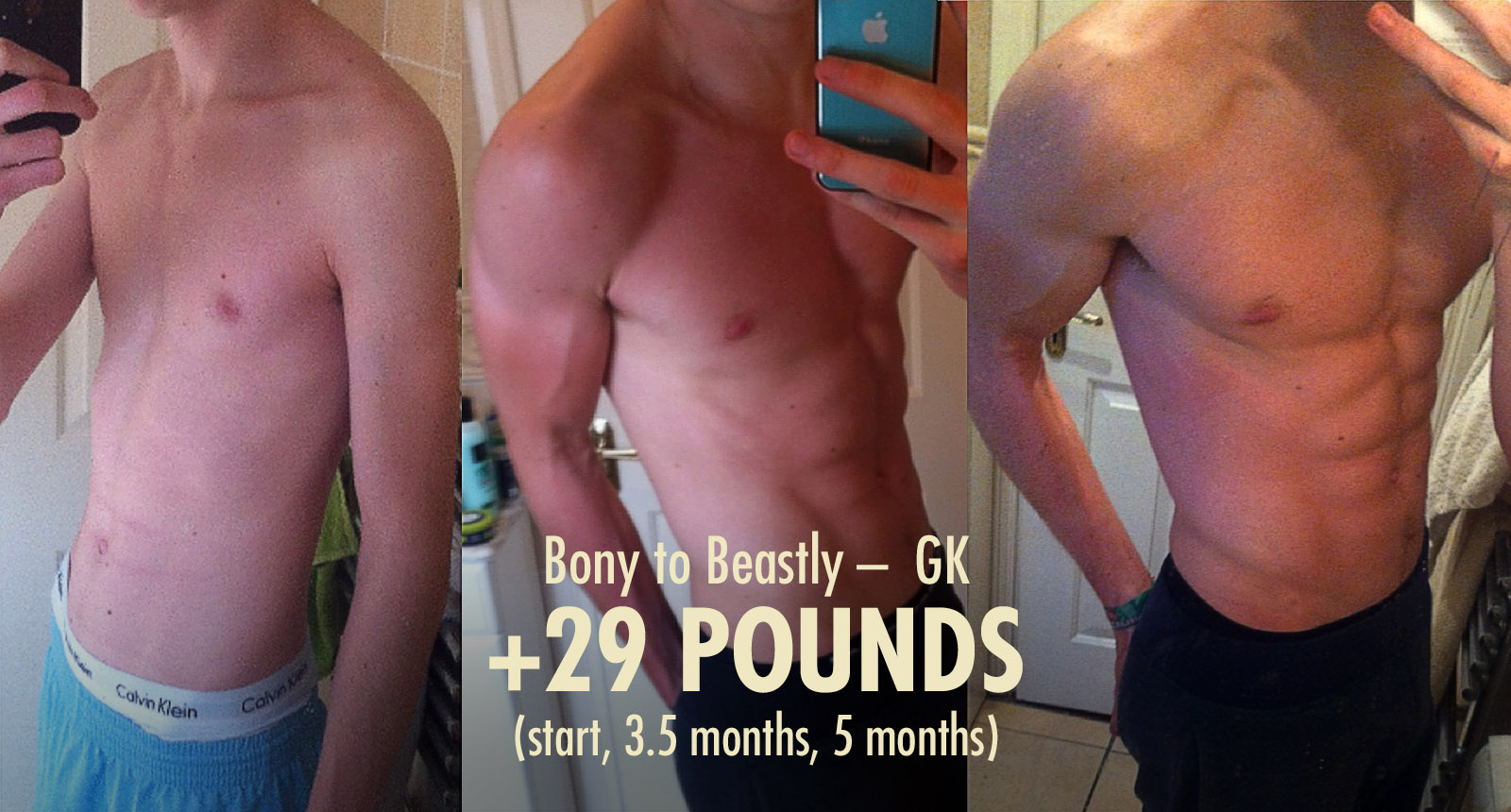
There’s a caveat, though. Some guys are NATURALLY lean. It’s common for skinny guys to have a lower body-fat percentage. We aren’t lean because we dieted down; we’re lean because we have a genetic propensity for leanness. We often have good genetics for building muscle leanly, potentially justifying a larger calorie intake, allowing us to build muscle faster.
Can You Be Too Fat to Build Muscle?
Now let’s imagine you’re already a little bit overweight. Maybe you’re at 21% body fat, slightly above the healthy range. Maybe your waist circumference is inching closer to 40 inches, signifying visceral fat storage. And for the sake of argument, let’s say that your body-fat percentage is beginning to affect your inflammation, cortisol, testosterone, and estrogen. Will you be more likely to gain fat if you start bulking? Again, looking at the data, that doesn’t seem to be the case.
The problem is, the more fat you have, the harder it is to see your progress. Maybe you start your bulk at 21% and finish it at 22%, gaining 10 pounds of mostly-lean mass as you do it. You’ll look a bit bigger. Maybe you’ll even look a bit better. But you still won’t have much muscle definition. You’ve made great progress, it’s just tough to see.
Many skinny-fat guys get frustrated while bulking because their progress is invisible. They’re gaining strength, gaining muscle, and making decently lean gains, but their muscle definition isn’t improving. Their muscles are growing underneath a layer of fat, creating the illusion that they’re getting fatter.
Plus, not every bulk goes perfectly. Maybe the skinny-fat guy is gaining a high proportion of body fat. It can be hard to tell sometimes. Gaining strength is a great indicator of muscle growth, but even then, you won’t know exactly what proportion of muscle and fat you’re gaining. It can be confusing.
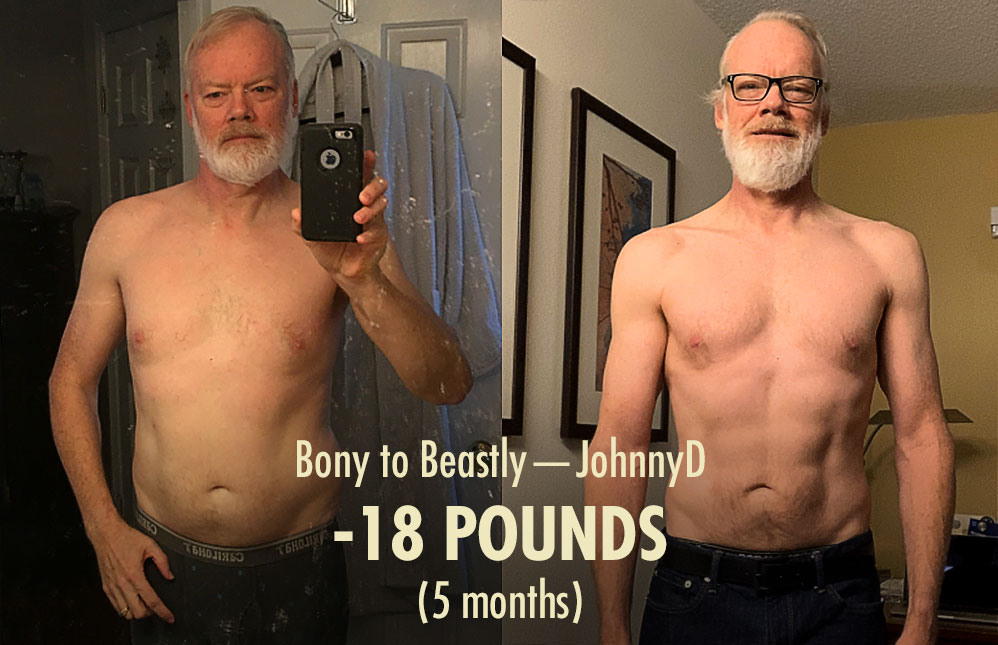
On the other hand, if you start by cutting, progress is much easier to see. Your muscle definition will improve as you lose fat, especially as you get closer to 15%. And if you’re gaining strength while losing weight, that’s a great sign of gaining muscle. Even if you just maintain your strength, you’re doing just fine.
What’s the Best Body-Fat Percentage for Bulking?
You can build muscle perfectly well at high body-fat percentages. Having extra fat makes it easier to build muscle leanly. If you’re overweight, you can build muscle while bulking, maintaining, or even losing weight, especially if you’re weak or new to lifting.
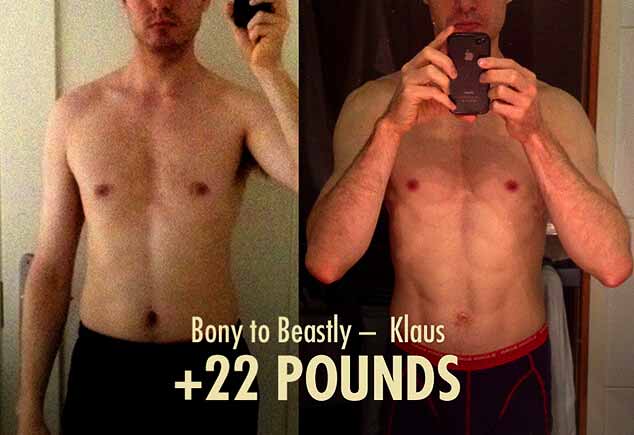
At leaner body-fat percentages, your body won’t want to burn what little fat it’s managed to save. You’ll need to get extra energy from your diet. You’ll need to bulk to build an appreciable amount of muscle.
The next thing to consider is your health. For that, we can look at your waist circumference. Your waist circumference (measuring visceral fat) has a stronger effect on your general health than your overall body-fat percentage (which includes subcutaneous fat).
Measure your waist at the narrowest point. If you’re under 36 inches, you aren’t storing much visceral fat, so you don’t need to worry. You can bulk if you want to. If you’re between 37–40 inches, it’s unclear if your fat will negatively impact you. If you’re over 40 inches, you should probably lose some fat before bulking. To burn proportionally more visceral fat, you can lift weights, do some cardio, eat a nutritious diet, and improve your sleep.
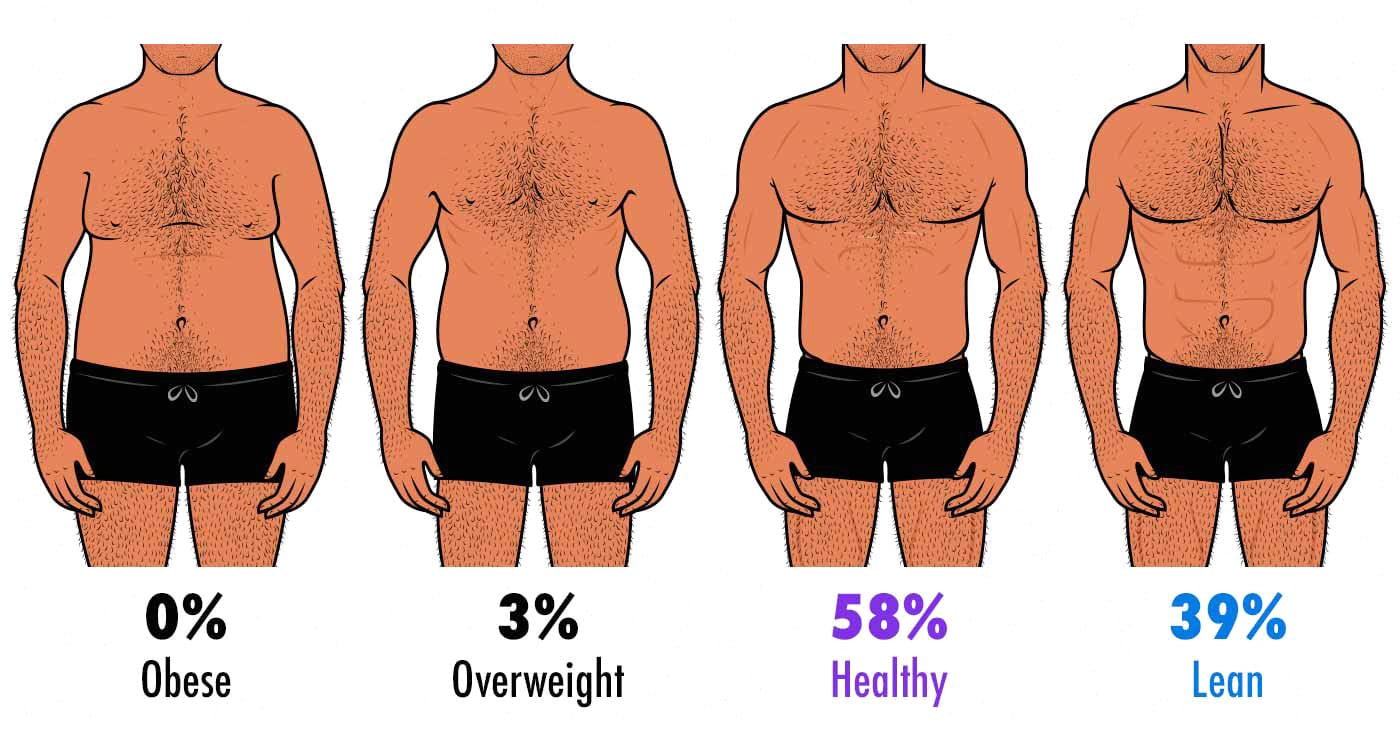
get our bulking recipes—smoothies, snack, & protein balls
4 free bulking recipes
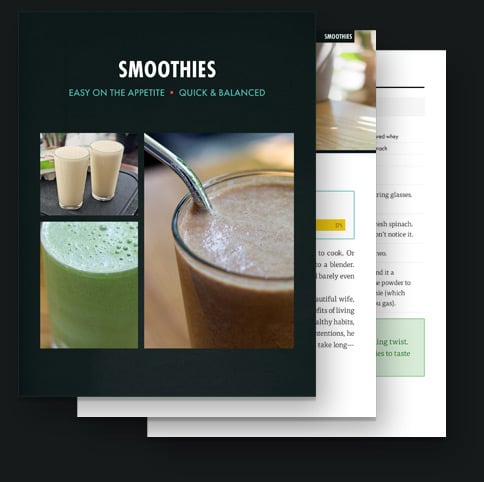
Get four bulking recipes in a downloadable PDF file. Get the full explanation, ingredient list, macros, and steps to follow.
Plus, we’ll make sure you’re on the b2B newsletter, and send you all of our best muscle-building content.
Finally, we can consider your appearance. Most people look their best in the 10–20% body fat range (source). If you’re at the lower end of that range, bulking is the best path forward. If you’re flirting with the upper end of that range, you might want to burn a bit of fat before bulking. If you’re above 20% body fat, cutting is usually the best path.
If you’re skinny-fat and eager to bulk up, that’s okay. You can build muscle just as leanly as anyone else, and perhaps more so. Alternatively, you could start with an emphasis on getting stronger, not worrying too much about how your weight changes. It’s up to you. Go with your gut (or without it).
The most important thing is to bulk and cut PROPERLY. Make sure you’re losing fat while cutting, ideally gaining some muscle and strength, too. You also need to ensure you’re making relatively lean gains while bulking, accompanied by large and lasting increases in strength. If you can do that, then whatever path you take, you’re advancing toward your ultimate goal.
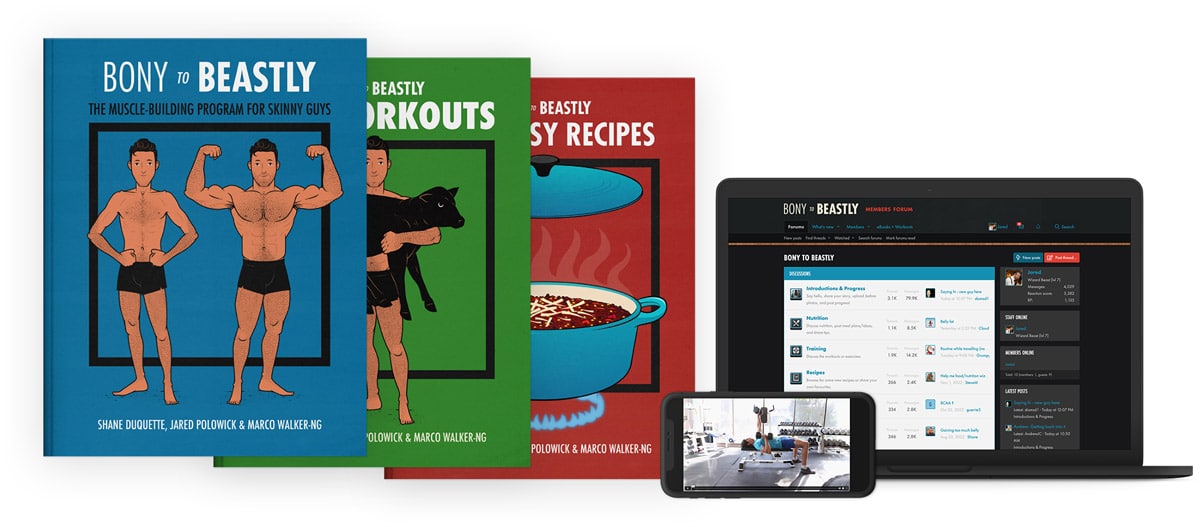
Alright, that’s it for now. If you want more muscle-building information, we have a free muscle-building newsletter. If you want a full bulking program, including a 5-month workout routine, diet guide, recipe book, and online coaching, check out our Bony to Beastly Bulking Program. Or, if you want a customizable intermediate bulking program, check out our Outlift Program.
Muscle-Building Mini-Course via Email
Sign up for our 5-part muscle-building mini-course that covers everything you need to know about:
- Hardgainer genetics and how to make the most of them.
- How to take a minimalist approach to building muscle while still getting great results.
- What you need to know about aesthetics, health and strength while muscling up.



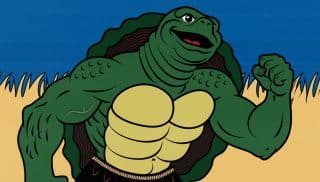

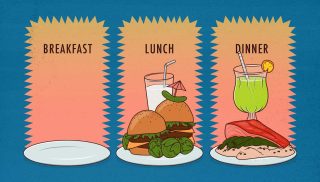
It’s not so much the raw waist measurement as it is waist to height ratio. In fact, waist to height ratio is a much simpler and even more effective metric to use than BMI because it automatically and always accounts for body fat in a rather simple way, so you won’t be called “obese” as an advanced lifter with a lot of muscle mass and, say, 15% body fat.
The acceptable range is 0.4 to 0.6. At 70 inches (5’10”) this works out to a range of 28-42 inches for your waist, with 35 inches obviously being the middle at 0.5 w/h ratio. Given that the average male height in America is 5’10” I can see where your standards may have developed from, however, they quickly fall apart even with a difference of 3-4 inches of height either way.
Even if it’s not quite as bad as I’m proposing, I still think it’s better that people have semi-personalized targets for their own bodies instead of just below 36, around 36, and above 40, so perhaps in future articles you could give a little nod to Waist/Height ratio and its elegant simplicity.
Hey David,
Waist circumference is far better studied and seems to work as well as waist-to-height ratio (study).
People usually grow taller without growing much wider, so that doesn’t really change the ideal waist circumference by very much. If you look at an NBA team, you aren’t looking at BIG people, you’re looking at TALL people. It’s actually pretty rare to see big guys like Shaq. Most of them are thin guys like Michael Jordan, with fairly regular waist measurements.
The same is true in reverse. When people are shorter, they tend to be stockier. Not always, but usually.
Waist-to-height ratio might still be better, it’s just I’m going by the research. I can look deeper into it to see if there’s more evidence than last time I checked.
See, that’s new information to me, I thought people would at least have a tendency or the potential to remain proportional enough that it would matter. Thanks for the insight.
Then again, perhaps it’s simply that much like your analogy, shorter people will have a harder time getting and keeping the fat off while taller people will have more trouble building their muscle base in the first place… Hmm. Don’t we already know this to also be true?